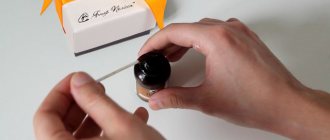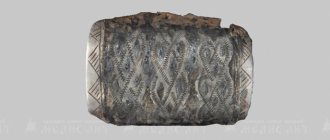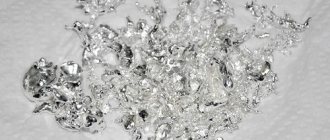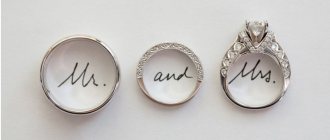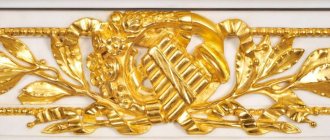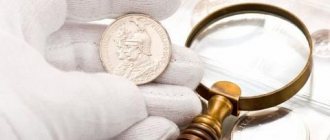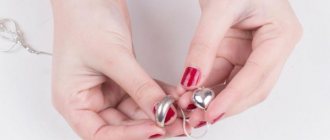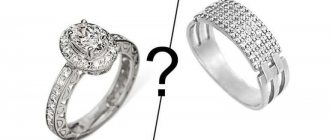Precious metal jewelry is often subjected to various jewelry techniques. For example, silver is blackened in order to change the shade and give contrasting lines in the ornament. Such items look unusual and can be mistaken for antiques, so it is necessary to wear silver jewelry correctly. They do not show any defects, chips, or dullness, however, you need to know how to store and care for them. What is the process of blackening silver, is it possible to do it at home?
Silver blackening: what is the essence of the process. Popularity of aristocratic blackened silver in the 17th century
Blackening or patination of silver is a type of decorative and applied art that appeared among the Russian people in the 17th century. The process of this type of creativity originated in the city of Veliky Ustyug, where craftsmen working with precious metals lived.
The reason for this was the geographical location of the city of Veliky Ustyug. Once upon a time, all trade routes from west to east and back passed through it. Valuable goods and precious metal passed through this city.
Naturally, craftsmen quickly realized that they could make good money in this business. This is how the silver craft appeared, which turned from a way of earning money into an art. Almost every master could perform the technique of blackening silver products, and he did it by hand.
What is the mob in ancient Rus'
Blackening of household items and jewelry was incredibly popular in Rus'; niello was used to decorate snuff boxes, dishes, inlaid furniture, and was widely used to decorate churches and temples.
The blackening technique involved coating metal, mainly gold and silver, with a special powder of copper, lead and sulfur. The master could supplement the composition of the powder with crushed silver to obtain a bluish tint. The powder was diluted and applied to certain places on the product, then the surface was fired, cleaned and polished. The end result was a beautiful etched pattern in all shades of black.
Types of jewelry silver
Jewelry silver is divided into different types. They are distinguished from each other by their appearance, composition, characteristics, and the products that are made from them.
- Sterling silver is an alloy that is the strongest. It is distinguished by its color - perfect whiteness. Sterling silver does not tarnish and is of the highest standard 925. It is successfully used for the production of premium jewelry. Cutlery is also made from it.
- Blackened silver. All jewelry that came to us from the last century is undoubtedly made of blackened precious metal. This is a type of alloy considered aristocratic. It was made by applying sulfur oxides of silver and copper to the finished jewelry. Then the decorations were heated, subsequently dark ornaments appeared on its surface. Such jewelry was often worn as talismans and amulets.
- Oxidized silver. Oxidation is a modern process of coating the surface of jewelry with a protective oxide film. This film consists of silver oxide. Oxidation of noble metal not only protects jewelry from external influences, but helps preserve its color.
- Rhodium plated silver. The rhodium plating process is often used in jewelry production. This is a noble metal, similar in appearance to silver, but its properties are much stronger. Rhodium plating serves as a protective layer for decoration. The rhodium plating method is not too expensive, which is why it is so widespread on an industrial scale. Rhodium plating does not lose its shine, does not fade, and remains white.
Modern blackening: liver of sulfur and sulfate film
Blackened silver is not at all the poor relative in the jewelry family. In price per gram, it is significantly more expensive than ordinary silver. But it is very difficult to purchase real blackened silver in stores; according to experts, in 80% of cases simple oxidized silver is sold under the guise of niello, and they are not shy about writing “blackening” on the tags.
The modern industrial blackening method is carried out using two technologies - sulfate film and sulfur liver. The technology for liver sulfur is simple: a solution is prepared in production from potassium carbonate, sulfur and water, the composition is applied with a brush to the decoration and wait from 2 to 24 hours. After a natural chemical reaction of silver with sulfur liver, the surface of the product will acquire a uniform bluish-black tint. Depending on what depth of color they want to achieve. The master chooses the time of exposure to the liver.
A sulfate film forms naturally on silver, and the galvanization method speeds up the process. Silver items are lowered into a bath with the prepared solution and an electric current is passed through the bath. The procedure lasts from 2 minutes to an hour, depending on how black they want to make the product.
Methods for making niello
As already mentioned, folk craftsmen began blackening precious metal more than 3 centuries ago. To this day, niello is one of the classic ways of decorating items made of precious metals. Using this method, silver jewelry is given a black color and all its various shades. Thanks to the niello, the product acquires noble and contrasting outlines. Blackening also helps to hide some defects, for example, seam connections on a ring or bracelet. In addition, blackening makes silver jewelry strong and durable.
Jewelry with a flat surface is not blackened. First, engraving is done on the jewelry, and original designs with indentations are applied. It is into these recesses that the niello is subsequently fused. Engraving depth: approximately 3 mm.
In turn, niello is an alloy that consists of copper, silver, sulfur and lead. These metals are melted down and applied in liquid form to the surface of the jewelry. Heated metals form a chemical reaction. As a result of the reaction, the drawings and patterns become black, and the precious metal itself successfully contrasts with it.
The main methods for producing alloys for blackening:
German
Copper and silver are melted, the entire composition is constantly stirred when heated. Molten lead is poured into it. Then the finished composition must be mixed with preheated sulfur powder. It is important to constantly stir the alloy. Thanks to stirring, all the metals that make up the alloy react perfectly chemically with each other.
Sulfur granules
Modern Moscow
This method involves remelting the following metals: copper, silver and lead. As the melting progresses, sulfur powder is added in small doses, after which the composition is filled into a cast-iron frying pan. The alloy is then left to solidify, crushed into solids, and melted again. At the second stage of heating, the composition is mixed with sulfur and flux.
Three mobile methods - what jewelers choose today
Today, for the production of mass-produced household items, the industrial method of galvanization is used, the products are obtained with a discreet, simple design, well polished and ... cheap. Exclusive jewelry or tableware are still made by craftsmen to order using manual pouring of the blackening composition and manual grinding. Today, folk craftsmen use three niello techniques:
- Moscow modern technology;
- Germanic;
- Russian (pre-revolutionary).
Each technique uses its own composition for the niello, resulting in special patterns with a predominance of black, gray or bluish undertones.
What is the German mob
In the “Germanic” recipe, lead is slowly poured into the copper-silver alloy, stirring well. The ternary alloy is poured into heated sulfur powder with constant stirring, stirring to ensure good interaction of the parts. Then the mixture is poured into water. The frozen pieces of niello are finely ground in a porcelain mortar in the required dose - only fresh, wet niello mass can be applied to the product.
Russian mob
According to the “Russian” recipe, the ternary alloy is not poured into sulfur powder, but sulfur is added to the alloy in portions, after which the finished niello is poured not into water, but into a cast-iron frying pan. This solid “pancake” is crushed into pieces and melted again with the addition of sulfur and flux. And so on up to three times, if you need extra-class rabble. The finished mobile is pounded in mortars and sifted through a fine sieve.
Moscow mobile recipe
The third is the author’s recipe of Professor A. G. Spassky (Moscow Institute of Non-Ferrous Metals); prepare silver sulfide, copper sulfide and lead sulfide separately and alloy them together in the required proportions. Then they melt and cool in a strictly defined way.
Methods of applying black: dry and wet
There are two ways to blacken silver items:
- Dry method. The silver surface must be moistened with a special solution for blackening silver, then apply fine powdered black. The prepared decoration is dried and fired in a muffle. Required temperature for firing: 300-400 degrees Celsius.
- Wet method. We are talking about niello, made in the form of a mushy mass, diluted with water, and using a brush to fill the engraved recesses. Then they leave it for a while, waiting until the water evaporates, and calcinate it in a muffle. The heated niello softens, melts and spreads over the design; if the decoration is small, then a special soldering gun is used.
After the blackening procedure, the product is sanded and sanded.
How does the process of blackening jewelry work?
Preparing decoration for blackening
Like any other process, it begins with a complete cleaning of the jewelry. It is washed, polished, ground; for products that have just come from the jeweler, all these steps are not needed. After all the manipulations done, the desired image is applied; this can happen in several ways:
- minting;
- etching;
- engraving;
- stamping.
The prepared blackening mixture is applied along the lines of the existing pattern (the depth of which must be at least 0.3 mm).
Applying the blackening mixture to the product
There are two types of mixture application method:
- Wet, in which a special prepared powder is moistened with water and carefully applied with a thin brush over the entire area of the image, carefully filling all the unevenness. After complete evaporation of the liquid, the product is placed in a special furnace (muffle), where the process of melting the working mixture occurs and it is evenly distributed over the entire surface of the pattern.
- The dry method is characterized by the separate application of components with different structures. First, a specially prepared liquid is applied. The next step is sprinkling with fine powder, which is done by thoroughly grinding the working mixture. Then the product is left to dry and only after that is sent to the oven.
Any chosen method ends with stripping. It is processed with a file or using the scraping technique. Here you need to be extremely careful so as not to catch the protrusions of the pattern.
Silver blackening technology
Silver can be blackened using several methods.
Mechanical impact
The mechanical blackening method is the direct action of certain substances on the surface of a silver product.
Silver bracelet with blackening
Applying a mixture of graphite with iron oxide and turpentine to a silver product
First, graphite and iron oxide are mixed, then turpentine is added to the composition. The resulting solution is applied to the silver jewelry, left until it becomes dry. As soon as the composition on the surface of the jewelry is dry, it is wiped with a soft rag, fiber or suede, which is pre-moistened in alcohol.
Electroplating with electrodes
Galvanic silver is produced by mechanical blackening. The electrolysis method with electrodes helps make the precious metal blackened and aged. But, unfortunately, the niello applied by this method is short-lived and wears out quickly. Electroplating is ideal only for blackening inexpensive silver jewelry.
Blackening of metals - a classic method
Jewelry craftsmanship in Russia reached its peak more than a thousand years ago; our ancestors created such famous techniques as niello, filigree , granulation; metal processing methods have survived to this day and are widely used in crafts.
Filigree is a decoration made using twisted strips of metal that are stretched and twisted.
Granulation is a method of decorating the surface of a product with small balls of metal (the granulation technique could not be recreated for a long time; most of the technology was lost).
How blackening of metals occurs in stages.
- The master prepares a mixture for the mob.
- Grinds the surface to be processed, applies a pattern to the surface (cuts grooves in the metal with a depth of 0t 0.3 to 3 mm.
- Pour the prepared mixture into the grooves.
- Places the product in the kiln for firing.
- Polishes jewelry, removes excess layer of blackened composition from the surface of the product.
Depending on the type of decoration and the artist’s idea, after polishing, you can gild the product, decorate it with filigree, precious stones, etc.
How to blacken silver using improvised means at home
You can darken precious metal yourself at home, using readily available and inexpensive means at hand. Common recipes for patination of silver at home.
Darkening with a Boiled Egg
One of the simplest ways to darken silver at home. You will need:
- chicken egg – 1-2 pcs;
- a container that can be tightly closed;
- thin thread, fishing line will also work.
Blackening stages:
- The eggs need to be boiled.
- Clean silver jewelry from dirt.
- Cut the boiled eggs in half, using only the yolks.
- Place the yolks on the bottom of the container, hang the silver item on a thread, secure it to the lid of the container and close tightly. The decoration should dangle inside the container; it should be rotated periodically so that the blackness is formed evenly.
- Remove the jewelry after 5-6 hours.
How can an egg darken silver? In fact, a chemical process occurs: the egg yolk releases hydrogen sulfide, which changes the color of the metal.
Blackening silver with a boiled egg
Sulfur ointment and hair dryer
You can get blackened silver using sulfur ointment and a regular hair dryer. It is necessary to heat the ointment with a hairdryer so that it becomes liquid. As soon as the ointment begins to flow, pour it over the surface of the silver jewelry. By the way, you can notice that already at the initial stage the metal will begin to darken. After the ointment has hardened, sand the metal with special sandpaper, and the blackening process can be considered complete.
Application of iodine
Iodine, which is found in every housewife's medicine cabinet, is also an excellent means for blackening precious metals. To begin with, silver earrings or rings need to be cleaned of fingerprints, sweat marks, and dirt. Then, using a cotton swab or swab, the jewelry should be thoroughly coated with iodine and left to dry in the sun.
Metal oxidation
Now you can find oxidized silver in stores, which is passed off as blackened. They may be visually similar, but they differ in quality.
Oxidized silver has the same blackish color, but with uneven filling and is slightly darker than real blackened silver should be.
Metal oxidation is a cheaper way to apply niello to a patterned surface. The product is coated with a thin oxide film, which creates blackness. The thicker the layer, the blacker the pattern will be.
But this method of blackening metal is short-lived. Over time, the film wears off and the item loses its original attractive appearance.
Advantages and disadvantages of the home method - how to age silver at home
Blackened silver has many advantages:
- it does not need to be constantly cleaned;
- it does not fade or darken, since it is already black;
- a piece of jewelry that has been artificially aged looks antique and expensive.
If we talk about the disadvantages of blackening at home, it is important to note the risk of causing potential harm to the noble metal. Without precise knowledge and skills of blackening technology, silver items can simply be ruined.
History of blackening of metals in Rus'
They learned to blacken metals in Rus' from the moment blacksmithing arose, i.e. long before the baptism of Rus'. The country's museums keep examples of blackened jewelry dating back to the 5th century BC. e.
The heyday of technology dates back to the 10th century; in the Principality of Chernigov, masters brought the technology to perfection, and from Chernigov the mob spread to other Russian cities. It is interesting that over a thousand years, blackening technology has not undergone fundamental changes; of course, instead of a stone furnace, stationary muffle furnaces are used today, but the basic principles have remained the same.
Craftsmen of Veliky Ustyug created their own school of metal blackening in the 18th century; it is the products of Veliky Ustyug masters that are considered the basis of modern technology.
Get rid of blackheads in 30 minutes
The most affordable and easiest way to get rid of black metal: clean the precious metal with a soda solution.
You need to pour 2-3 teaspoons of baking soda into a saucepan with water. Place foil on the bottom of the container and decorations on top. Boil the contents of the saucepan for about 5 minutes. By the way, this cleaning method is also applicable for tableware and silverware.
Another effective means for cleaning silver items from niello is citric acid. Moreover, you can use both powdered citric acid and juice squeezed from lemon.
Lemon juice, which is not as concentrated as citric acid, is more gentle on the blackness on silver.
How to clean silver from blackness using citric acid? Dissolve 100 g of powder in half a liter of water in a bowl, wrap silver items in foil, and place inside the container. Boil the solution for 15 minutes. Boiling in a lemon solution helps make the product snow-white and shining.
Usage
Blackened silver has never left the fashion pedestal. Years give way to centuries, but the trend for blackened silver remains. This is because, whether it is a sophisticated pendant or a relief bowl, blackened silver gives the products an original, sophisticated appearance.
In addition, such items do not require constant care and cleaning. They are durable and resistant to mechanical damage, do not darken over the years and retain their attractive appearance for a long time.
Now famous designers around the world have blackened silver jewelry, cutlery, home decor items, and even clothing items in their collections. After all, blackened silver is a style and sophistication that will highlight any look.
When blackened silver looks appropriate. How to choose the right jewelry
Jewelry made from niello-treated silver is not intended for every day. They look perfect with an ethnic, animal, or boho look.
In order not to be mistaken about the authenticity of silver, you should make purchases in jewelry stores with a proven reputation, check the mark on the product and, if necessary, request a certificate for the product.
You should be wary of purchasing jewelry online or on Avito. It is better then to purchase the jewelry at a pawn shop or at a discounted price, since it will already be checked by a local jeweler.
Black on silver: styles and techniques
Blackened jewelry can be purchased in almost all jewelry stores. The main thing is to pay attention and check with the sellers whether this technique was used in the product you are trying on. After all, it may turn out to be a fake.
Israeli ethnic style jewelry deserves a separate topic. Israeli craftsmen use embossing, blackening and many other techniques in their works with their own stories. The decorations look like ancient ones, which we can only find in ancient human burials. In the cities of Ukraine and Russia today you can find many products from Israel.
Review
I started wearing black silver several years ago. These are some of my favorite pieces of jewelry today. They feel unique, bohemian, some kind of magic and esotericism.
Anastasia R., Lviv
Zhenya K., Moscow
I wear blackened silver items, which I am very pleased with. Especially because this metal is easy to maintain. Cleaning once every few months, using affordable means, suits me perfectly. The undoubted advantage of such jewelry is that even if they turn black or fade, no one will notice it.
I would like to note the aesthetic aspects of silver jewelry with niello. They look expensive, as if they were inherited from their great-grandmother, the countess. Therefore, his nobility is not just emphasized, but even intensified.
Valentina P., Stavropol
What it is
Blackened silver is black-colored silver made using special technology. During the Renaissance, this technique was at the peak of its popularity. Liturgical objects were made from blackened silver and decorated bowls, caskets, knife handles and cutlery handles.
Nowadays, blackened silver has not lost its attractiveness. Small silver items with niello in combination with complex ornaments look interesting in the contrast of colors. There are many different “recipes for preparing” blackened silver, but the meaning of all is the same - to obtain a shade of black, from grayish to deep black.
Application technique
The creation of blackened products took place in several stages:
- preparation of the mixture;
- sanding the finished product to be decorated;
- creating a pattern by cutting out recesses of about 0.3 mm;
- applying niello: melting the mixture in a furnace and filling the recesses on the workpiece with a liquid composition;
- removing the excess layer is a very important point that requires a lot of time and patience;
- gilding of the finished product.
The beauty of blackened products has led to the use of this technique for more than five centuries.
Emergence of mastery
The history of the development of blackening began in the 5th century BC. e. It was most developed among the tribes of the Black Sea region who lived in the north. The blackening technique became most popular in the 10th century AD. e., namely in the city of Chernigov. Afterwards, blackening as a skill spread far beyond the Russian lands.
Craftsmen of Veliky Ustyug in the 18th century created an entire school to teach the skill of blackening metal. They are considered the founders of modern technology. Blackening is used in jewelry to this day.
Product care
Although items made of blackened silver do not tarnish, dirt may well accumulate on them. Therefore, it is recommended to care for it regularly, wash, wipe and dry well.
- A regular soap solution is perfect for removing light dirt and dust from the recesses of the product.
- You can use potato infusion for cleaning. Pour water over the peeled potatoes and let it brew. Then place the blackened silver there and leave it for several hours (up to 4). Afterwards, as always, rinse and wipe.
- Never use harsh or abrasive products, such as ammonia, dry baking soda powder, etc., to clean blackened silver.
- Plus, blackened silver does not tolerate hot temperatures, which means that all methods involving boiling will not work.
- Such items can only be wiped with a soft cloth and stored in a dry, dark place.
How to wear blackened silver correctly
This type of jewelry today has its army of fans around the world. For example, many stores sell silver jewelry in the form of rings, bracelets, pendants and earrings with niello applied. All jewelry is made in different styles and has a certain price.
In addition, craftsmen decorate such products with precious stones and inlay them with rhodium-plated silver and gold.
Accessories and other items using the blackening technique can be worn for all formal occasions as well as every day. Silver jewelry goes well with any style of clothing, except casual sportswear, which already contains decorative elements.
Such jewelry will look great under an evening dress, a business suit or a light version of a summer dress.
Why does silver darken?
According to statistics, silver jewelry darkens after six months of wear.
If your chain has changed color before, this indicates poor quality of the product. After all, all factory chains are treated with a special solution (rhodium film). The main reasons for darkening of metal include:
- natural wear and tear of the protective rhodium film, after which the silver is exposed to “attacks” from the environment;
- severe sweating in the neck area, containing acids - they affect the color of silver;
- incorrect functioning of the kidneys or liver - there are more toxins in the body, which change the shade of the jewelry;
- the impact of sulfur-containing substances on jewelry - the chain can darken even when it is lying in the closet.
About 50% of the Russian population attaches magical significance to silver. In this light, the darkening of the chain speaks of the evil eye or damage caused by an ill-wisher.
